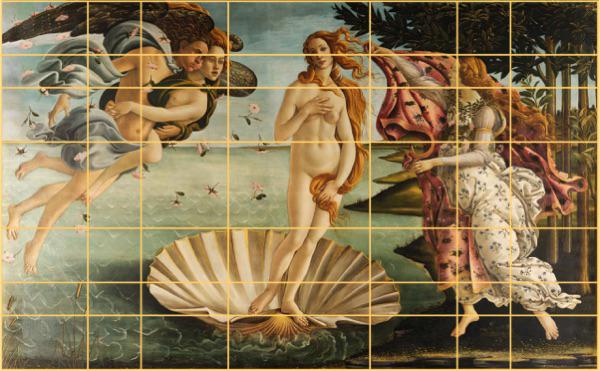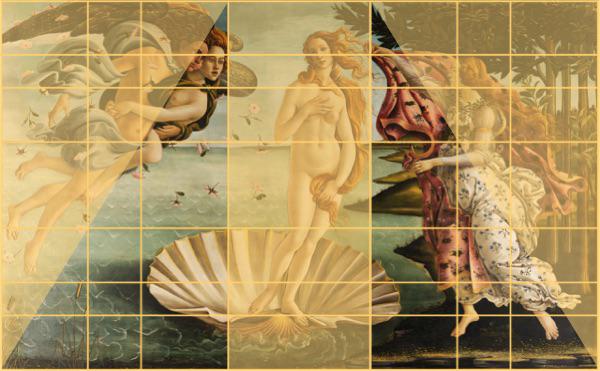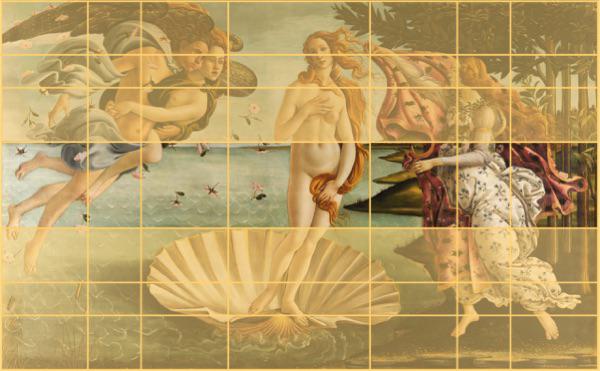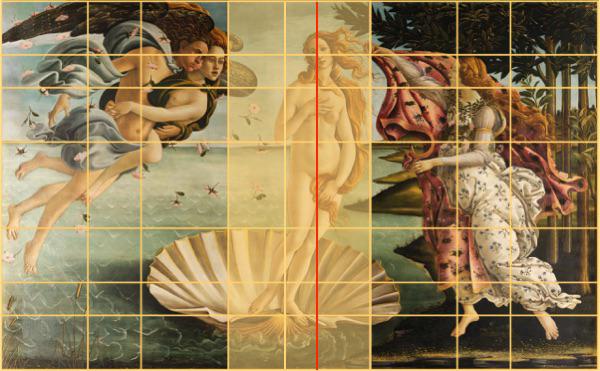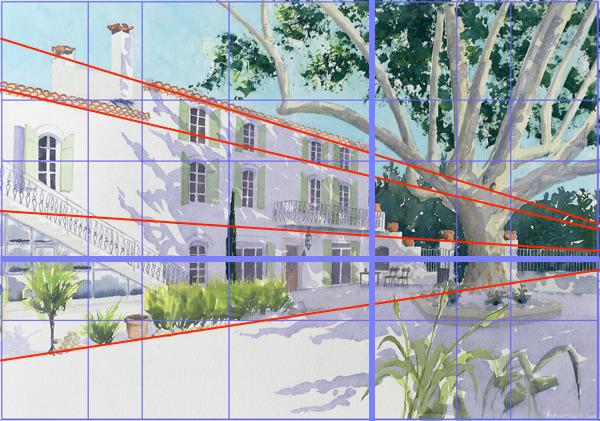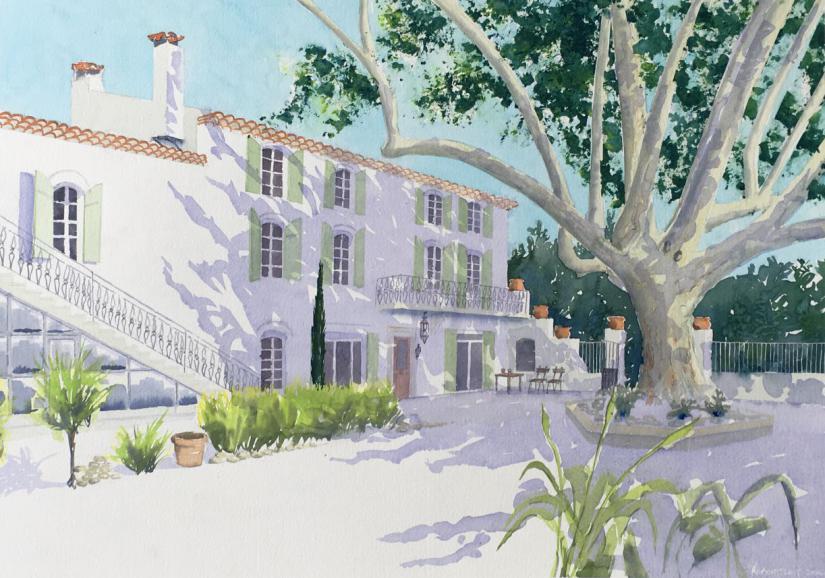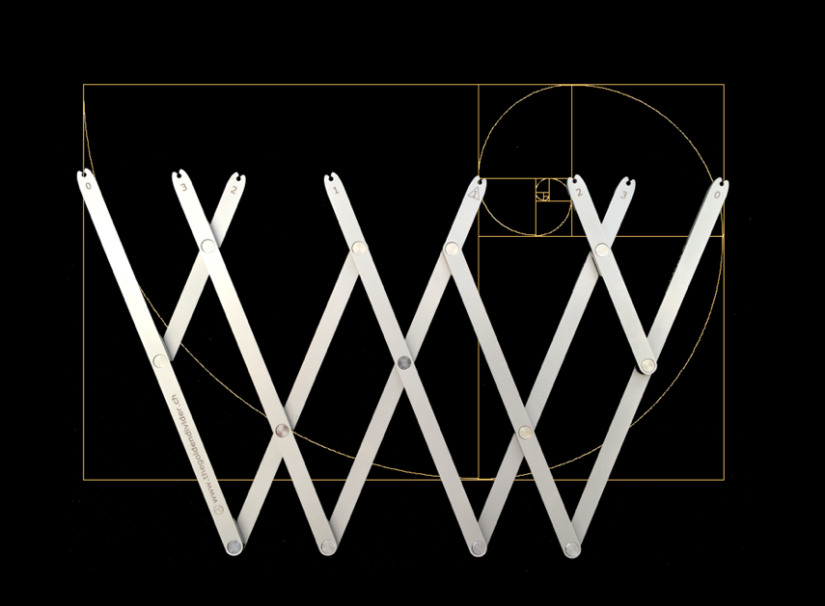The tools
What are the calculations and the tools required to set up such a structure?
At first, a long ruler and a calculator! In a second, an original tool that will allow the creative to save time and to visualize immediately the proportions: the "Golden Divider for Arts".
We will draw inspiration from this "regulating lines" system, reconstruct it, and analyze how it can make it easier for us to set up the structure of a picture.
Let us divide the height and the width of the "image window" (= the painted surface of the painting) by 1.618, i.e. the Golden ratio.
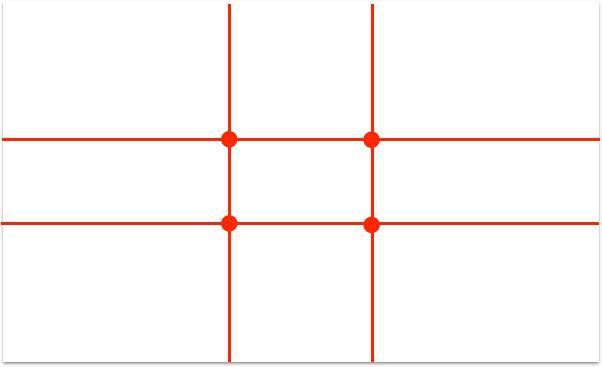
This first division reveals the four red lines above. We will call them the "primary golden lines" of the structure. They intersect in four points, called "primary golden dots".
Let us do this same division in the rectangles formed by the vertical and horizontal red lines and the margins of the structure, tinted in yellow below (Click on the slide show to scroll through the images)
We get four blue lines, which we will call "secondary golden lines". They intersect in four points, called "secondary golden dots".
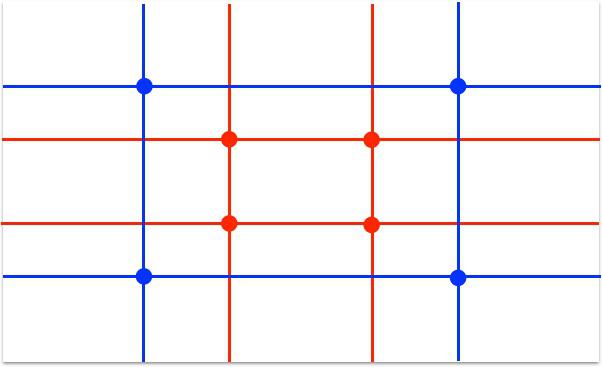
A third subdivision on the new rectangles appearing above gives rise to the four green lines called "tertiary golden lines" and their points of intersection called "tertiary golden dots".
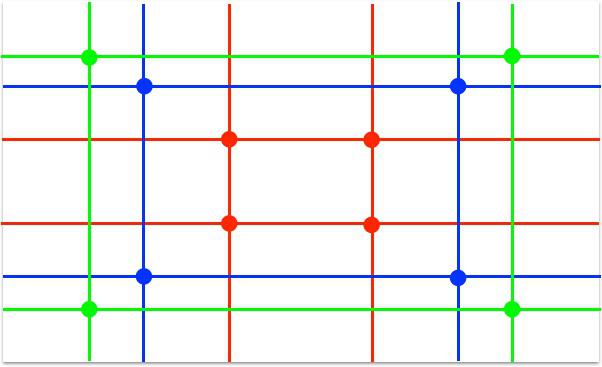
The structure of our painting is ready: these surfaces and points will allow us to position the horizon of the painting, the different volumes as well as the centers of interest of the painting.
Let us superimpose those "regulating lines" on the masterpiece of Sandro Botticelli and analyze the way in which the different centers of interest are disposed.
